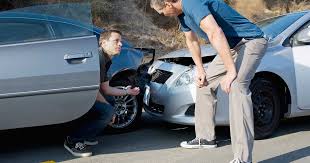
When it comes to rear-end collisions, you may think that the driver behind the impacted car is the driver at fault. However, this is not always the case. The driver behind the rear-ended car is not always liable for an accident. In some situations, the driver in front could be completely or partially liable for causing the accident.
If you’re in a rear-end collision, be sure to work with a qualified lawyer who can assist you in getting the settlement you deserve. An attorney can help you identify any liable parties and find the evidence to prove your claims.
Negligence and Rear-End Accidents
To make sure you get the compensation for damages in a rear-end accident, you have to provide evidence that the other driver involved in the accident is liable for the collision. If you can prove that the driver was negligent by not acting in an expected manner while on the road, you are more likely to prove your innocence.
One example of this would be a case where the driver was speeding, trying to change lanes without signaling, or driving while distracted. These could be factors used to verify that the driver was at fault.
How to Know Who Is at Fault
Most of the time, people assume that rear drivers are liable for rear-end collisions. Most of these types of car accidents happen when a driver does not slow down in time or isn’t following at a safe distance.
In some instances, the front driver could be liable for the accident. For example, if the driver in front changes lanes and is too close to the rear vehicle, the car in the back will crash into the rear of the front driver’s car. In these instances, the front driver is completely responsible for the collision.
Sometimes, front drivers are only partially at fault. For instance, if the driver suddenly stops all of a sudden to turn left but doesn’t complete the turn, both the front and the rear driver may be responsible for the collision.
If a car has a malfunction or the driver is not able to turn the hazard lights on, the driver could be liable in part for the car accident. In these cases, the jury will decide how much fault is assigned to each driver in the collision.
Comparative Negligence
In rear-end accidents when both drivers are liable, both parties will have different degrees of negligence chargers. Some states follow a rule known as comparative negligence. This means that even if the plaintiff in an accident is partially to blame for the collision, they can still recover damages. However, the damages can’t be greater than the fault assigned to the other drivers in the collision.
After an accident, the settlement amount will be based on a percentage that is equal to the percentage of liability assigned to the driver. For instance, if you’re in a rear-end accident and you receive a settlement of $100,000, if the jury rules that you are 30% liable, you’ll receive $70,000. The 30% subtracted from your settlement will go to the driver who was affected by your negligence.
In some states, if you are 51% at fault in an accident, you won’t be able to receive any compensation. This percentage indicates you are primarily liable for the accident. Any settlement funds you would have received will be given to the other plaintiffs in the accident for damages and/or pain and suffering.
In rear-end collision accidents, there is a high chance of physical injuries that only slowly become apparent. That’s why it’s important to get medical treatment right away and continue treatment as you recover from your accident. If you’re in a rear-end collision, be sure to contact an attorney who can negotiate with insurance companies to get a fair settlement for you after your accident.

